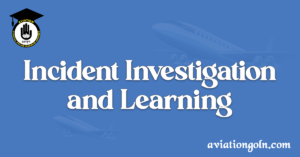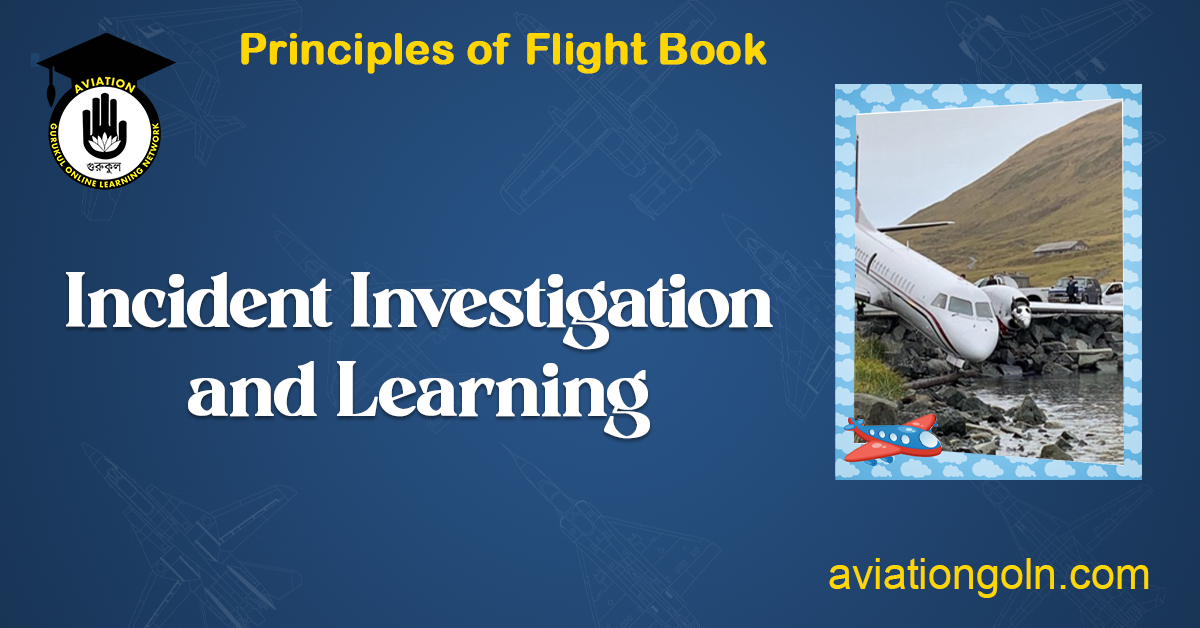The aviation industry is built upon a foundation of safety, trust, and relentless dedication to ensuring the secure transport of passengers and cargo. Over the decades, the industry has witnessed considerable improvements in the realms of technology, operations, and flight safety measures. Yet, despite the best efforts, incidents and accidents do happen. These unfortunate events, while distressing, provide a unique opportunity to delve into what went wrong, learn from mistakes, and enhance safety measures. This is where incident investigation and learning come into play, fortifying the significance of flight safety and emergency procedures.
Incident Investigation and Learning

1. Incident Investigation: A Brief Overview
An incident in aviation can range from minor technical glitches to major mishaps leading to loss of life. Regardless of the scale, every incident needs to be thoroughly investigated to understand the underlying causes and avoid future recurrences.
1.1. The Objective
The primary objective of an incident investigation isn’t to assign blame but to uncover facts. By doing so, aviation professionals can:
- Recognize the factors that led to the incident.
- Enhance flight safety procedures.
- Train crew and ground staff with enriched knowledge.
- Update equipment and technology if necessary.
- Share insights with the global aviation community to ensure widespread safety.
1.2. Investigation Phases
Typically, an aviation incident investigation comprises several phases:
- Immediate response: Secure the scene and gather preliminary data.
- Data collection: Document the scene, interview witnesses, gather radar data, retrieve flight recorders, and collate all relevant information.
- Data analysis: Decode flight recorders, analyze collected data, and reconstruct the incident sequence.
- Reporting: Compile findings, propose recommendations, and release a public report.
- Follow-up: Ensure recommended changes are implemented and monitor their effectiveness.
2. The Role of Learning in Enhancing Flight Safety
Incident investigations offer a wealth of knowledge. But this knowledge only holds value when it’s converted into actionable insights that lead to improved flight safety.
2.1. Real-time Learning
Incidents serve as real-time case studies. They provide:
- Tangible evidence: Instead of hypothetical scenarios, crews face real challenges and understand actual consequences.
- Updated training modules: Simulations and training modules can be modified to include recent incidents, making them more relevant.
2.2. Systematic Analysis
Learning from incidents isn’t just about recognizing mistakes but understanding why they occurred. It necessitates a systematic approach:
- Human factors analysis: Understanding psychological, physiological, and environmental conditions affecting human performance.
- Technical analysis: Evaluating if equipment failure, design flaws, or technological glitches played a part.
- Operational analysis: Assessing if standard operating procedures (SOPs) were followed and if they require modification.
3. Emergency Procedures: The Pillars of Immediate Response
While investigation and learning are reactive and proactive aspects respectively, emergency procedures act as immediate responses during a crisis.
3.1. Importance of Robust Emergency Procedures
A well-defined emergency procedure:
- Minimizes chaos: It provides a roadmap during crises, reducing panic and confusion.
- Ensures safety: Directs passengers and crew towards the safest course of action.
- Facilitates rescue operations: Helps in timely evacuation, medical aid, and damage control.
3.2. Regular Drills and Training
Having an emergency procedure on paper isn’t enough. Regular drills, simulations, and training ensure:
- Muscle memory: In a crisis, reactions are more reflexive than cognitive. Training ingrains responses.
- Evolution of procedures: Drills might reveal flaws in procedures, leading to refinements.
4. Case Study: Learning from Past Incidents
Over the years, several incidents have revolutionized aviation safety. One such is the Tenerife Airport disaster (1977). Two Boeing 747s collided on the runway, resulting in 583 fatalities. Investigations revealed a series of misunderstandings between the control tower and pilots.
Lessons learned:
- Enhanced communication protocols: The phraseology in aviation communication was standardized to avoid ambiguities.
- Cockpit Resource Management (CRM): Encouraged better teamwork and communication among cockpit crew.
This tragic event underscored the need for clearer communication protocols and better crew coordination, leading to the widespread adoption of CRM in pilot training.
5. Technology’s Role in Enhancing Flight Safety
Post-incident analysis often paves the way for technological advancements. For instance:
- Flight Data Recorders (FDR) and Cockpit Voice Recorders (CVR): These “black boxes” capture crucial flight parameters and cockpit conversations, respectively, aiding investigations.
- Traffic Collision Avoidance System (TCAS): Helps aircraft detect potential collision threats and suggest evasive actions.
- Enhanced Ground Proximity Warning System (EGPWS): Warns pilots of potential terrain conflicts early enough to take corrective action.
6. The Way Forward
Incident investigation and learning, combined with evolving emergency procedures, are integral for advancing aviation safety. As aviation continues to grow, the focus must remain on:
- Global collaboration: Sharing investigation outcomes, best practices, and lessons learned globally ensures uniform safety standards.
- Ongoing training: Regularly updated training modules reflecting the latest incidents and technologies.
- Technological adoption: Embracing innovations aimed at proactive incident prevention.
In conclusion, while the primary aim of the aviation industry is to ensure incidents never occur, the reality is that they will. It’s the industry’s commitment to rigorous investigation, continuous learning, and robust emergency responses that ensures the skies remain as safe as possible for everyone.
